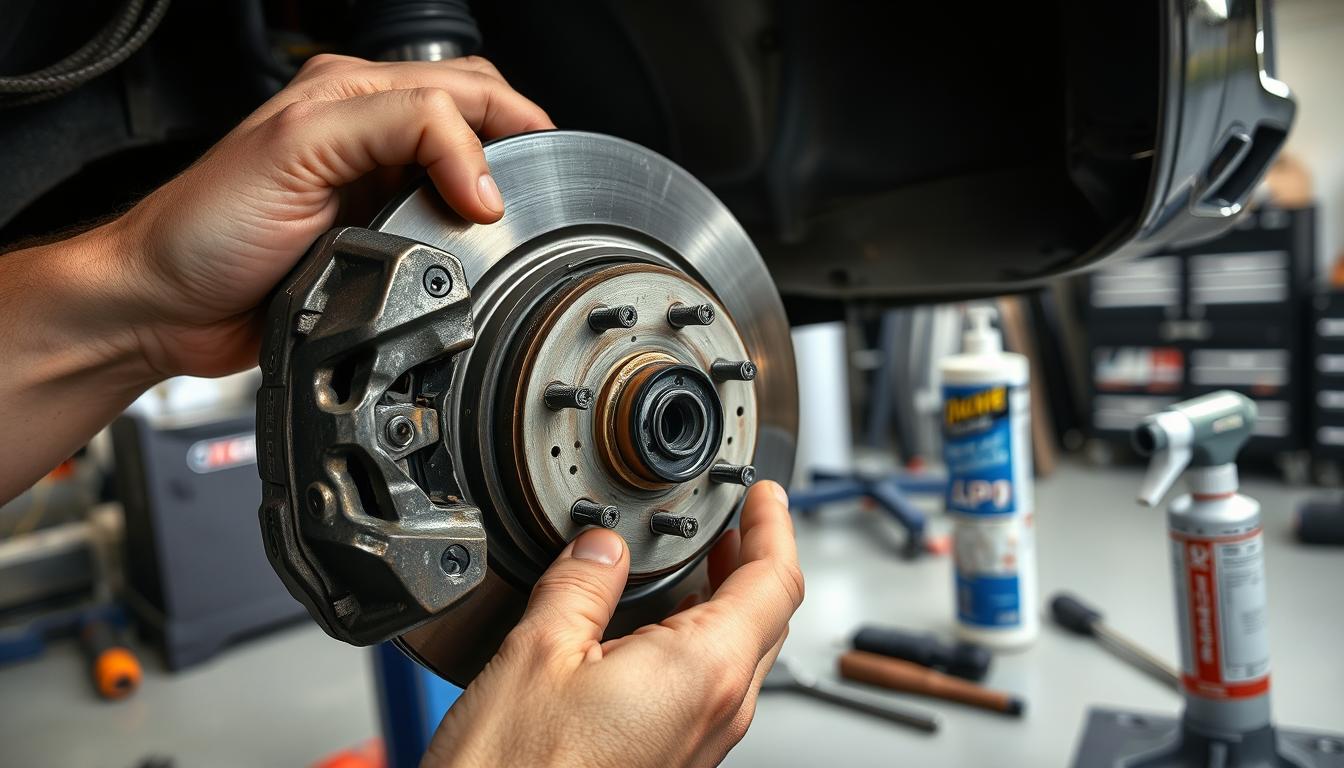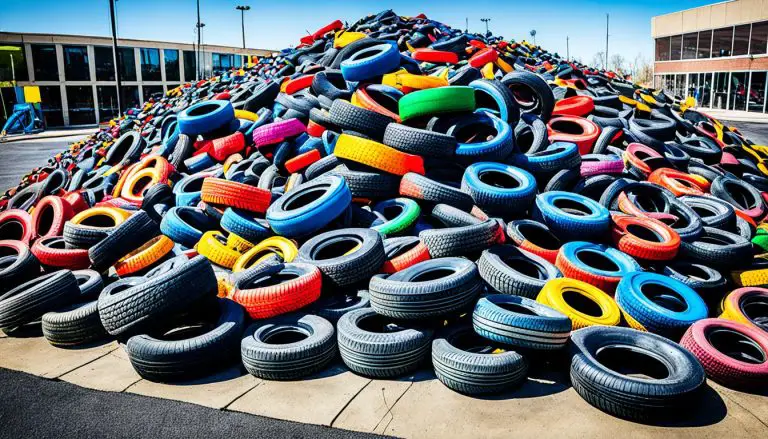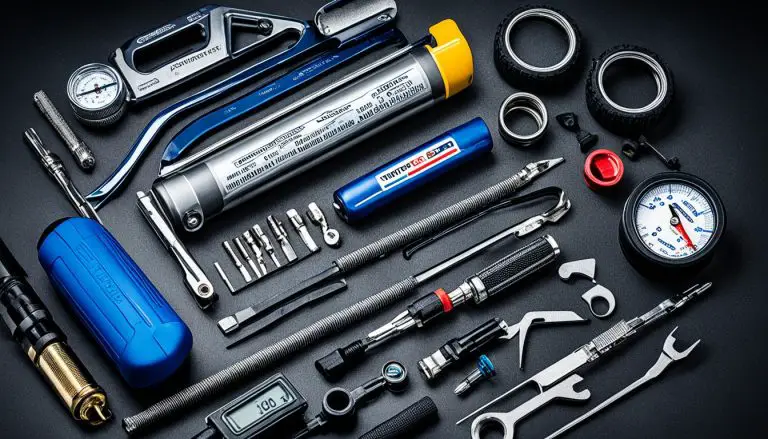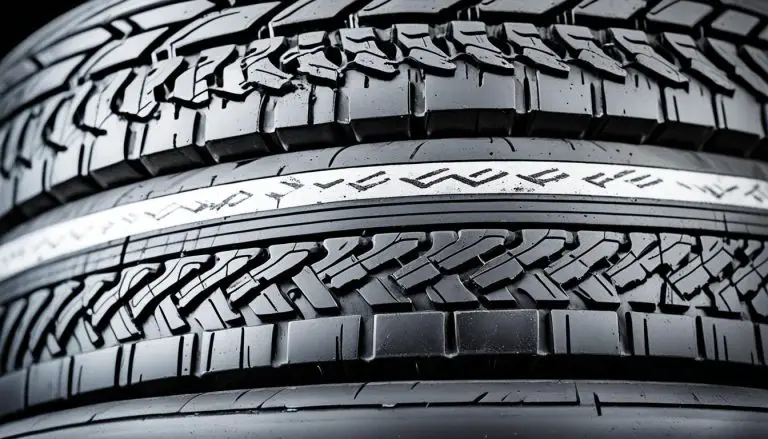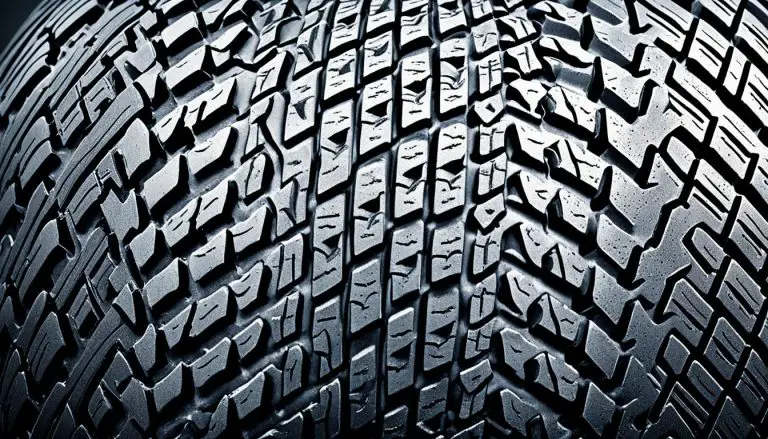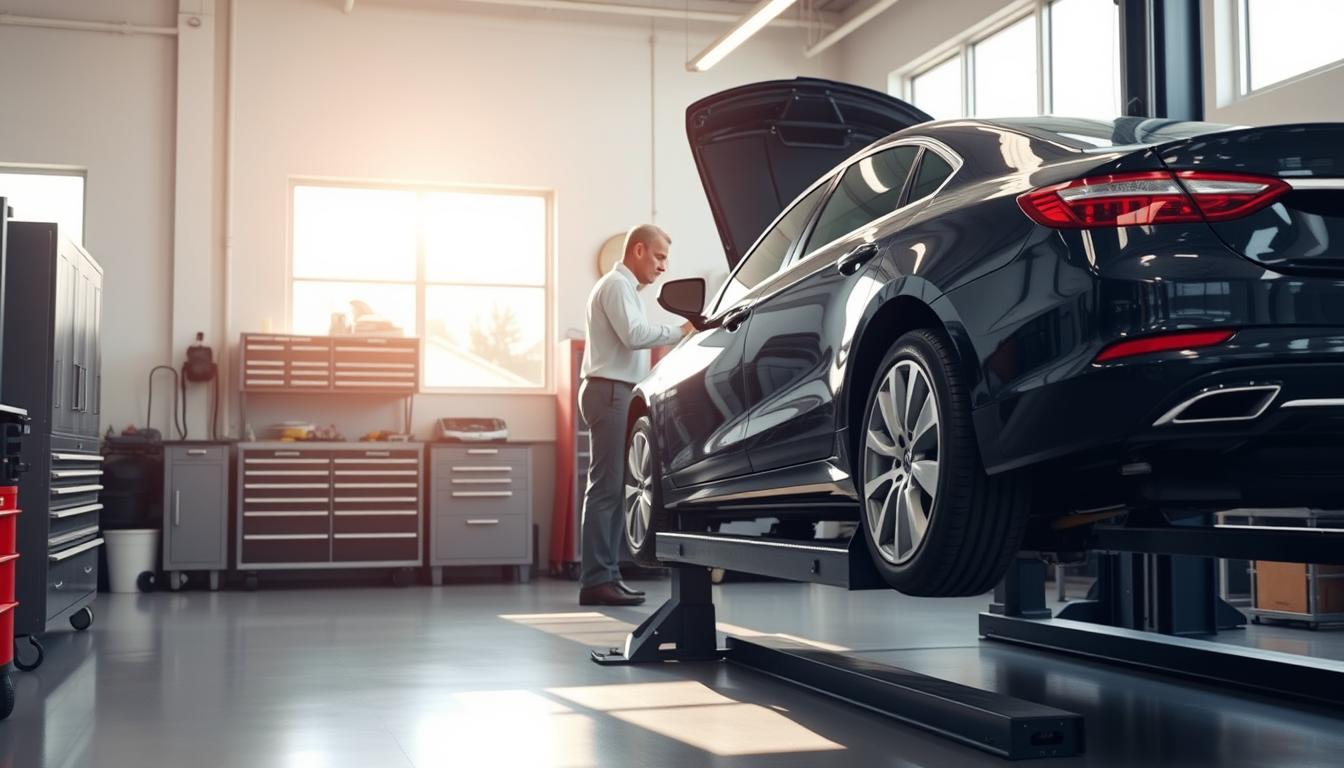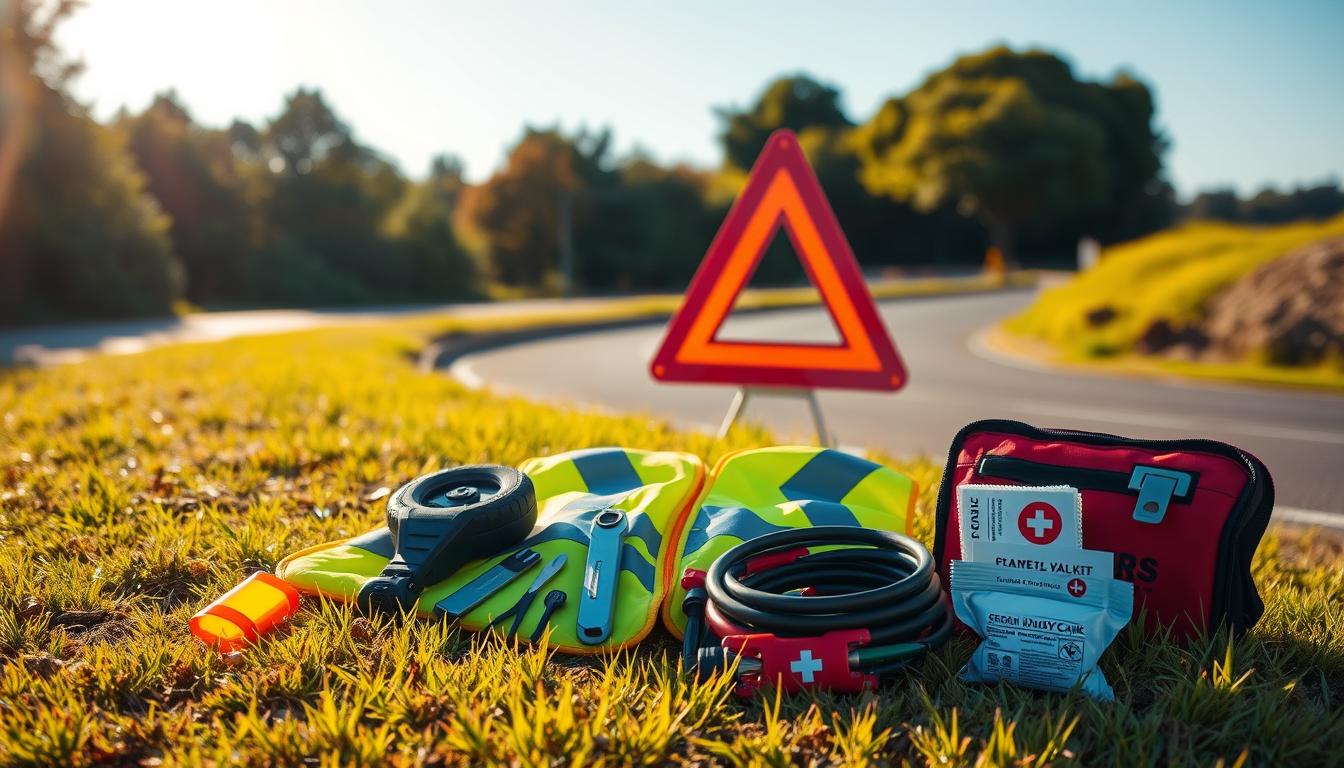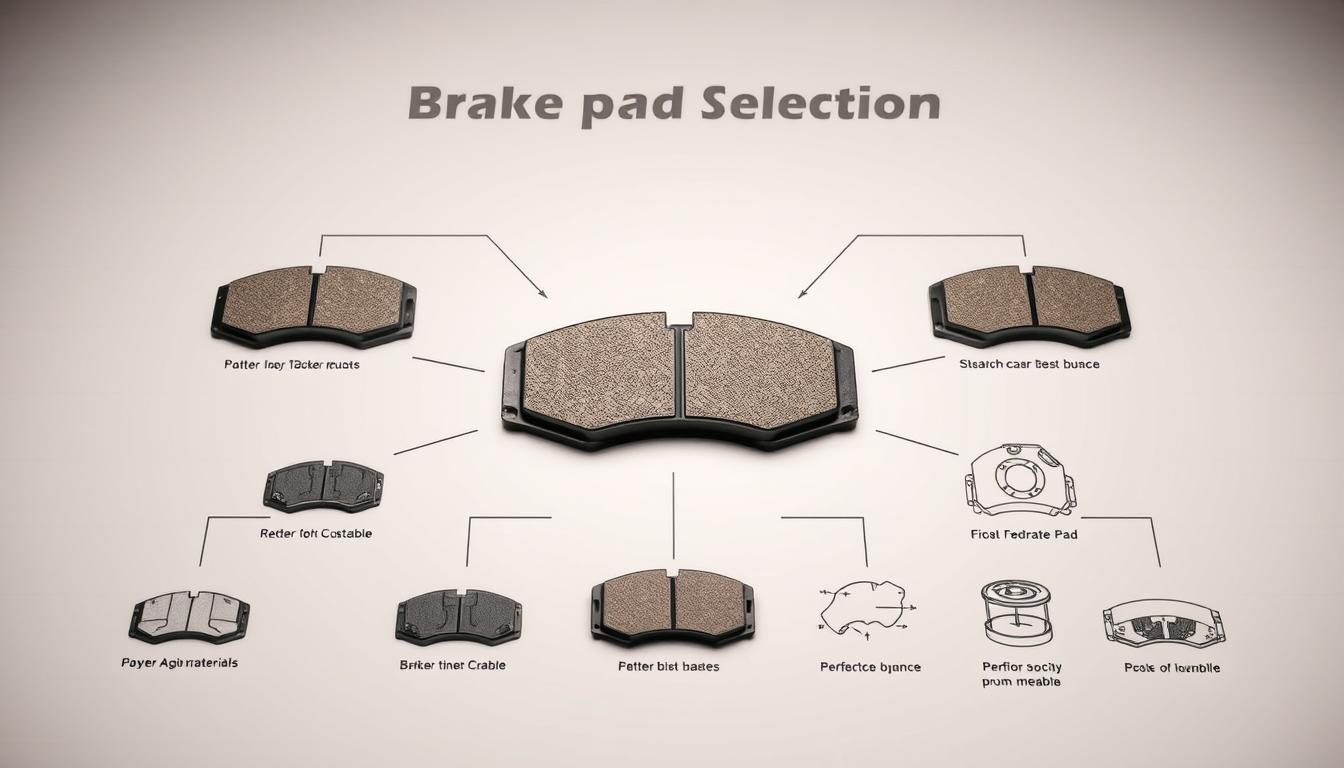
Choosing the right brake pads for your car can be tough. Every car owner has to pick the best brake pads and know when to replace them.
We know how important it is to make smart choices for your safety. In this guide, we’ll show you how to pick the right brake pads and when to swap them out.
We aim to give you top tips on brake pad selection. We’ll cover the basics, signs you need new pads, different types, and what to think about when buying.
Key Takeaways
- Understand the different types of brake pads available.
- Learn how to identify when your brake pads need replacement.
- Discover the factors to consider when selecting brake pads.
- Get expert guidance on choosing the best brake pads for your car.
- Ensure your safety on the road with informed brake pad choices.
Understanding Brake Pad Basics
Learning about brake pads is key to picking the right ones for your car. They are a vital part of your car’s brakes. Knowing how they work and the other parts of the braking system helps you make smart choices about upkeep and fixes.
The Function of Brake Pads in Your Vehicle
Brake pads are essential for stopping your car safely. They create friction with the brake rotors when you press the brake pedal. This friction slows or stops your car. The material of the brake pads affects how well they work, how long they last, and how quiet they are.
When picking brake pads, look at the brake pad material comparison. This helps you choose the right one for your driving style. For example, semi-metallic pads are durable and good at cooling but can be loud. Ceramic pads are quiet and make less dust.
Key Components of a Braking System
Your car’s braking system has several important parts. These include brake pads, rotors, calipers, and the master cylinder. The rotors are the discs that the brake pads press against to stop the car. The calipers hold the brake pads and press them onto the rotors. The master cylinder turns the brake pedal’s pressure into hydraulic pressure to actuate the brakes.
It’s important to know how these parts work together. This knowledge helps you spot problems and make good choices when fixing or replacing parts. By following brake pad buying tips and understanding each part’s role, you can keep your car’s brakes working well and safely.
Signs Your Brake Pads Need Replacement
It’s important to know when your brake pads need to be replaced. Replacing them early can make your car safer and run better.
Audible Warning Signs
Unusual noises are a clear sign that your brake pads are worn out. Squealing or grinding sounds when you press the brakes mean it’s time for new pads. These sounds tell you the pads are too thin.
- Squealing sounds usually indicate that the brake pads are wearing down.
- Grinding noises suggest that the brake pads have worn down to the metal, potentially damaging the rotors.
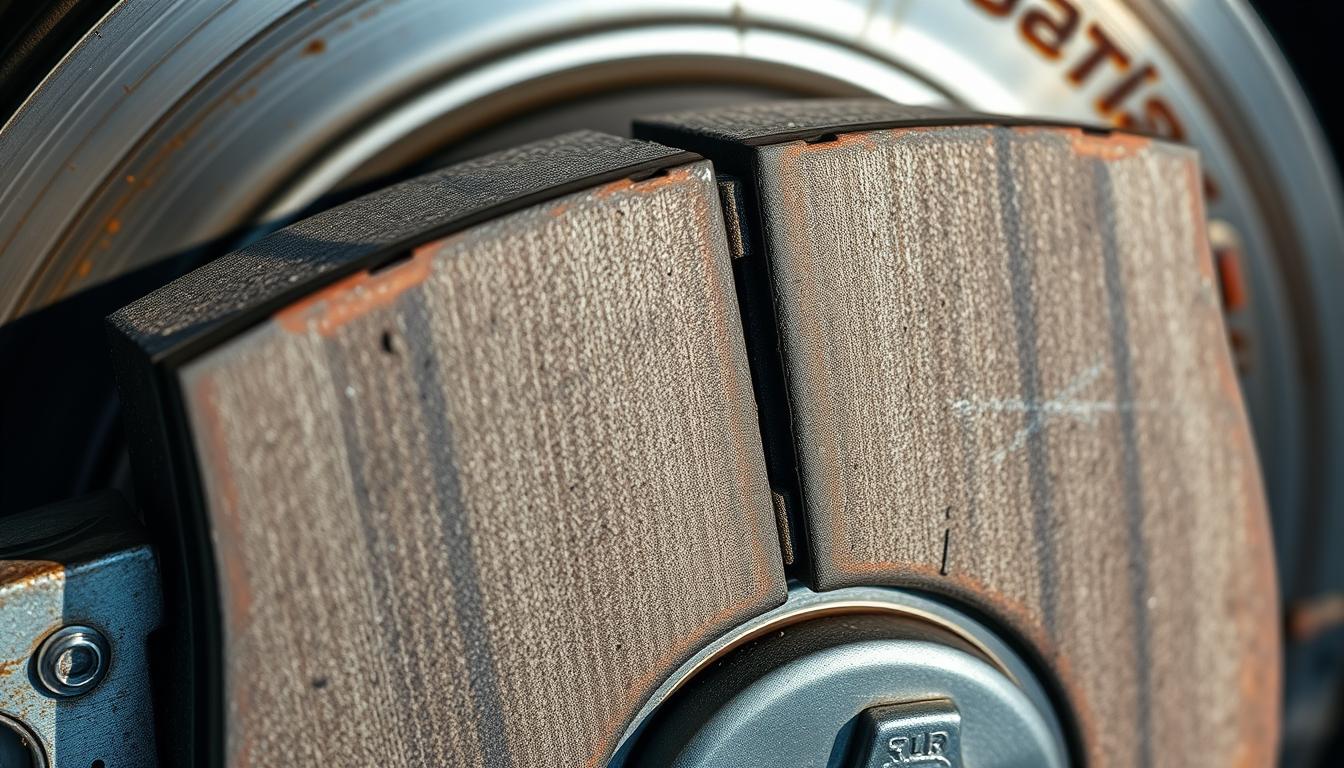
Visual Indicators of Wear
There are also visual signs that your brake pads are worn out. Regular checks can spot these problems early. Look for:
- Thin brake pad material.
- Wear on the brake pad’s surface or uneven wear patterns.
Regular checks can help you catch these issues early. This keeps your car’s brakes working well.
Performance-Based Warning Signs
Changes in how your car brakes can also warn you. If you notice:
- A vibration or pulsation when braking, it could indicate uneven wear or warped rotors.
- A spongy brake pedal or increased stopping distance, which may suggest worn-out brake pads or issues within the braking system.
Fixing these problems quickly keeps your car safe and efficient.
Different Types of Brake Pads Explained
It’s key to know about the different brake pads for your car’s safety and performance. Brake pads vary in materials, each with its own benefits and uses. They fit different driving needs.
Organic Brake Pads
Organic brake pads, or NAO pads, mix rubber, glass, and resin. They’re quieter and make less dust than others. But, they wear out quicker and don’t work as well in extreme heat.
Semi-Metallic Brake Pads
Semi-metallic pads blend metal fibers with other materials. They handle heat better and stop cars faster, great for fast drivers. Yet, they can be louder and wear down rotors more.
Ceramic Brake Pads
Ceramic pads use ceramic fibers and other materials. They’re quiet, make little dust, and perform well consistently. They’re best for those who value comfort and cleanliness.
Low-Metallic NAO Brake Pads
Low-metallic NAO pads mix organic and semi-metallic benefits. They stop well, are quiet, and make less dust. They’re good for many driving situations.
Environmental Considerations
Think about the environment when picking brake pads. Some pads are eco-friendlier, making less dust and using safer materials. The auto world is moving towards greener brake pads.
Choosing the right brake pads depends on your driving, car, and what you prefer. Knowing about the different types helps you pick wisely. This balances performance, comfort, and being kind to the planet.
- Key Factors to Consider:
- Driving style and conditions
- Vehicle type and specifications
- Brake pad material and composition
- Environmental impact
How to Know Which Brake Pads to Buy for Your Vehicle
Finding the right brake pads for your car can be tricky. You need to know your car’s specs, how you drive, and what brake pads fit your car’s brakes.
Matching Brake Pads to Your Vehicle Type
Each car needs different brake pads. For example, high-performance vehicles need pads that handle high heat and stress. Standard cars need pads that balance performance and durability.
To find the right pads, check your car’s manual or the manufacturer’s website. They list the brake pad type your car needs.
Considering Your Driving Style and Conditions
Your driving habits and where you drive matter when picking brake pads. If you drive in heavy city traffic, you need pads that handle lots of stops and heat.
Driving on highways might mean you want pads for a quieter ride and less dust.
OEM vs. Aftermarket Options
You can choose between OEM and aftermarket brake pads. OEM pads are made by the car’s original supplier.
Aftermarket pads are made by other companies. They offer different qualities and prices.
| Feature | OEM Brake Pads | Aftermarket Brake Pads |
|---|---|---|
| Quality | High, as per vehicle manufacturer’s standards | Variable, depends on the brand |
| Price | Generally more expensive | Can be more affordable |
| Warranty | Typically backed by the vehicle manufacturer’s warranty | Warranty varies by manufacturer |
Compatibility Issues to Watch For
It’s important to make sure brake pads fit your car’s brakes. The wrong pads can make braking worse, wear out other parts, and be unsafe.
To avoid problems, always check the brake pads’ specs against your car’s needs.
Evaluating Brake Pad Quality and Performance
The quality of your car’s brakes is key to safety. Knowing how to check brake pad quality helps you make smart choices for your car’s upkeep.
Understanding Brake Pad Ratings and Certifications
Brake pad ratings and certifications show their quality and how well they work. Groups like the Society of Automotive Engineers (SAE) and the Department of Transportation (DOT) have rules for brake pads. Look for certifications that show they meet these standards. This means they’ve been tested for safety and performance.
When looking at brake pad ratings, think about friction, heat resistance, and how long they last. A high friction coefficient means better braking. A low wear rate means they’ll last longer.
Reading and Interpreting Brake Pad Specifications
Brake pad specs might look hard, but knowing them helps pick the right pads for your car. Specs tell you about size, material, and if they fit your car.
Always check the manufacturer’s specs against your car’s needs. The material used affects how well the pads work and how long they last. For example, semi-metallic pads are great for high-performance cars because they handle heat well.
Reliable Brands and Manufacturers
Picking a trusted brand for brake pads is important. Good brands offer quality products that meet high standards. Brands like Brembo, Bosch, and Ferodo are well-known for their quality.
When picking a brand, think about reviews, warranties, and customer service. Reliable manufacturers give you all the info you need and support to help you choose wisely.
By knowing about brake pad ratings, reading specs well, and choosing trusted brands, you can get the best brake pads. This ensures your car is safe and performs well.
Cost Considerations When Buying Brake Pads
Understanding the cost of brake pads is key to making a smart choice. The cost isn’t just the price you pay. It also includes how long they last, how well they work, and if they come with a warranty.
Price Ranges for Different Types
Brake pads vary in price based on their type. Here’s a look at what you might expect to pay:
- Organic Brake Pads: $20-$50 per axle
- Semi-Metallic Brake Pads: $30-$70 per axle
- Ceramic Brake Pads: $40-$100 per axle
- Low-Metallic NAO Brake Pads: $30-$80 per axle
Keep in mind, these prices can change based on the brand, quality, and your car’s needs.
Value vs. Cost Analysis
Cost is important, but so is the value you get from brake pads. Cheap pads might save money at first. But they might not last as long or work as well, costing you more in the long run.
When looking at value, think about:
- How long they last
- How well they brake
- How quiet they are
- How much dust they make
Warranty Considerations
A good warranty can greatly affect the cost and value of brake pads. A strong warranty gives you peace of mind and protects your investment. It covers any problems or failures.
When buying brake pads, look for ones with solid warranties. A good warranty shows the manufacturer believes in their product’s quality and durability.
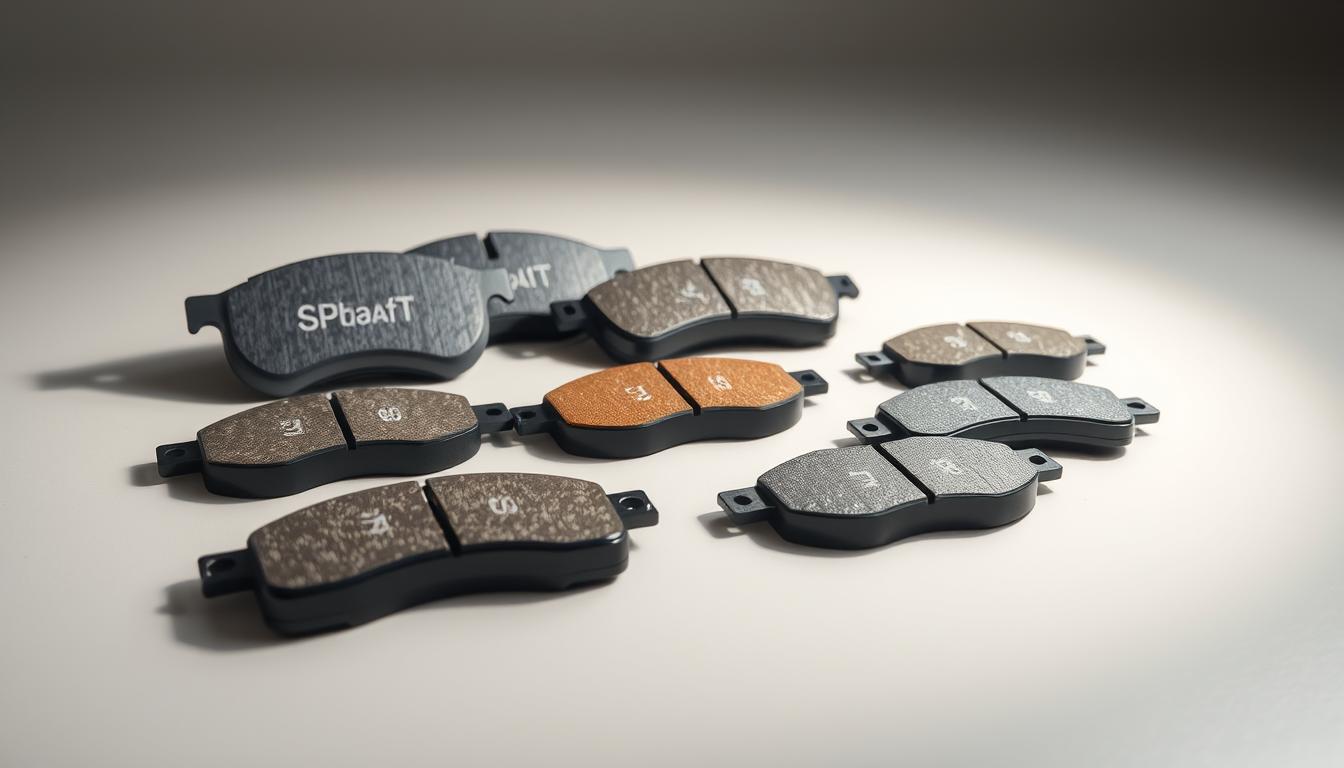
DIY vs. Professional Brake Pad Replacement
Car owners often wonder if they should replace brake pads themselves or get a professional to do it. The choice depends on your mechanical skills, the car’s braking system, and your budget.
Tools and Skills Required for DIY Replacement
To replace brake pads yourself, you’ll need basic tools like a socket wrench and safety glasses. You also need to know how your car’s brakes work and be okay with getting dirty. If you’re not sure about anything, look up a repair manual or online tutorials for your car.
Step-by-Step Brake Pad Replacement Process
The steps to replace brake pads are:
1. Raise the Vehicle: Lift your car with a jack and support it with jack stands.
2. Remove the Wheels: Take off the wheels to get to the brake calipers.
3. Remove the Caliper: Use a socket wrench to remove the caliper bolts.
4. Replace the Brake Pads: Take out the old pads and put in the new ones.
5. Reassemble: Put everything back together in the opposite order.
When to Seek Professional Help
If you’re not sure you can do it safely and right, or if your car has special brakes, get a pro. Also, if you see signs of brake trouble, like vibration or a soft brake pedal, get a mechanic’s help.
Cost Comparison Between DIY and Professional Service
DIY brake pad replacement costs mainly for the parts, which can be $50 to $200 per axle. Professional service adds labor costs, making it more expensive. But, many shops offer warranties, giving you peace of mind that might be worth the extra cost.
Common Mistakes to Avoid When Selecting and Replacing Brake Pads
Choosing and replacing brake pads can be tricky. It’s important to know the common mistakes to avoid. This ensures your safety on the road.
Selection Errors
One big mistake is picking the wrong brake pad for your car. There are many types, like organic, semi-metallic, and ceramic. The right choice depends on how you drive and your car’s needs.
Semi-metallic pads are great for fast cars because they last long and handle heat well.
| Brake Pad Type | Characteristics | Best For |
|---|---|---|
| Organic | Quieter, less dust | Daily driving, city use |
| Semi-Metallic | Durable, good heat resistance | High-performance driving |
| Ceramic | Less noise, less wear on rotors | Drivers seeking quieter brakes |
Installation Pitfalls
Installing brake pads wrong can make your brakes less effective. It’s key to follow the manufacturer’s guide or get help if needed. Mistakes include not cleaning rotors well and not bedding in pads right.
“Proper installation of brake pads is not just about safety; it’s also about ensuring the longevity of your vehicle’s braking system.” –
Maintenance Oversights
Ignoring brake system checks can cause problems. Regular inspections can spot wear and dust early. This lets you fix issues before they get worse.
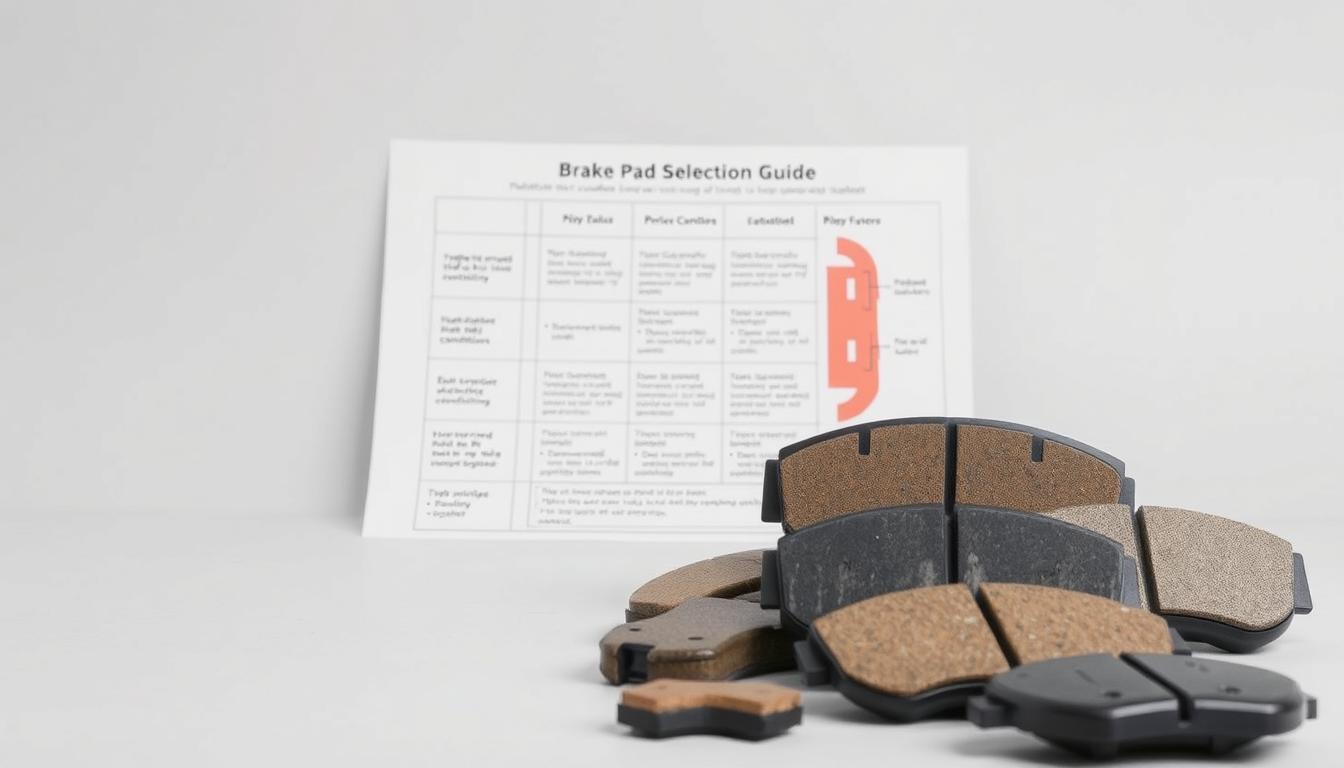
Knowing these mistakes helps keep your brakes working well. Whether picking new pads or replacing old ones, following the right steps is vital. This keeps your car running smoothly and safely.
Conclusion
Choosing the right brake pads is key for your car’s safety and how well it performs. Knowing the basics, spotting when they need to be replaced, and thinking about your driving style and car type helps a lot. We’ve given you a detailed guide to pick the best brake pads for you.
Wondering which brake pads to buy? Think about your car’s make, how you drive, and the conditions you’re in. Also, reading reviews and getting recommendations can help a lot. With our advice, you’ll be safe on the road and make smart choices that save you money.
FAQ
How do I know which brake pads to buy for my vehicle?
To find the right brake pads, think about your car type, how you drive, and the road conditions. Check your owner’s manual or talk to a mechanic for advice. It’s best to match your pads to your car’s specs and consider OEM or aftermarket options.
What are the different types of brake pads available?
There are many brake pad types, like organic, semi-metallic, ceramic, and low-metallic NAO. Each has its own benefits and fits different driving needs. We can help you pick the best one for you.
How often should I replace my brake pads?
How often to replace brake pads varies based on your driving, car type, and pad quality. Usually, check them every 10,000 to 15,000 miles. Replace them when they show wear. Your owner’s manual can give more specific advice.
What are the signs that my brake pads need replacement?
Look out for squealing or grinding sounds, worn-down pad material, and changes in braking. If you notice these, get your pads checked and replaced if needed.
Can I replace my brake pads myself, or should I seek professional help?
Replacing brake pads can be DIY if you have the right tools and know-how. But if you’re not sure or feel uneasy, it’s safer to get help from a pro. We can walk you through the process and help decide if you should DIY or get professional help.
What is the difference between OEM and aftermarket brake pads?
OEM brake pads match your car’s original specs. Aftermarket pads are made by others but might offer better value. Make sure aftermarket pads fit your car’s needs and braking system.
How do I ensure the brake pads I choose are compatible with my vehicle’s braking system?
To ensure compatibility, check your owner’s manual or talk to a mechanic. Look at brake pad specs and certifications, like SAE or ISO.
What factors should I consider when evaluating brake pad quality and performance?
When judging brake pad quality, look at ratings, specs, and the maker’s reputation. Choose pads that meet your car’s specs and suit your driving style.
Are there any eco-friendly brake pad options available?
Yes, some brake pads are better for the environment. Ceramic pads, for example, have less copper and emit fewer particles. We can guide you to eco-friendly options that fit your car.
